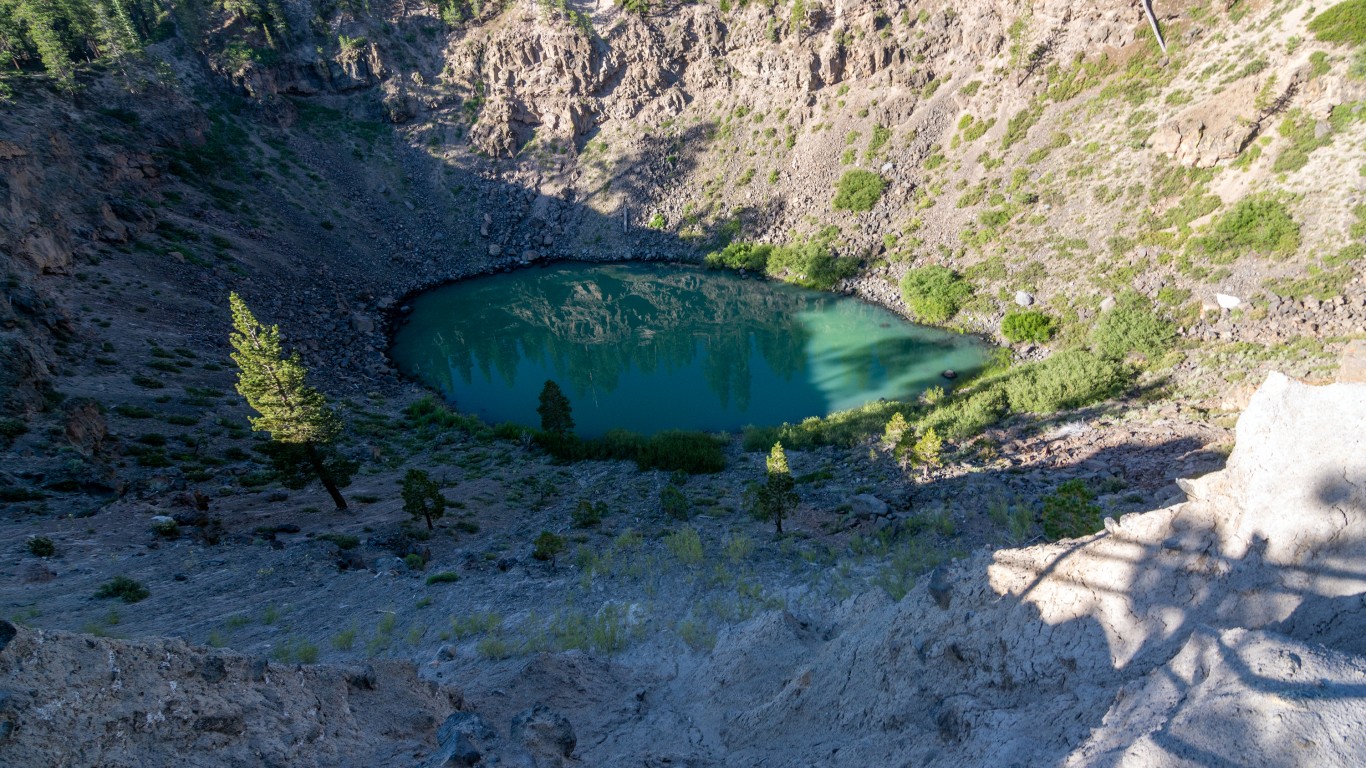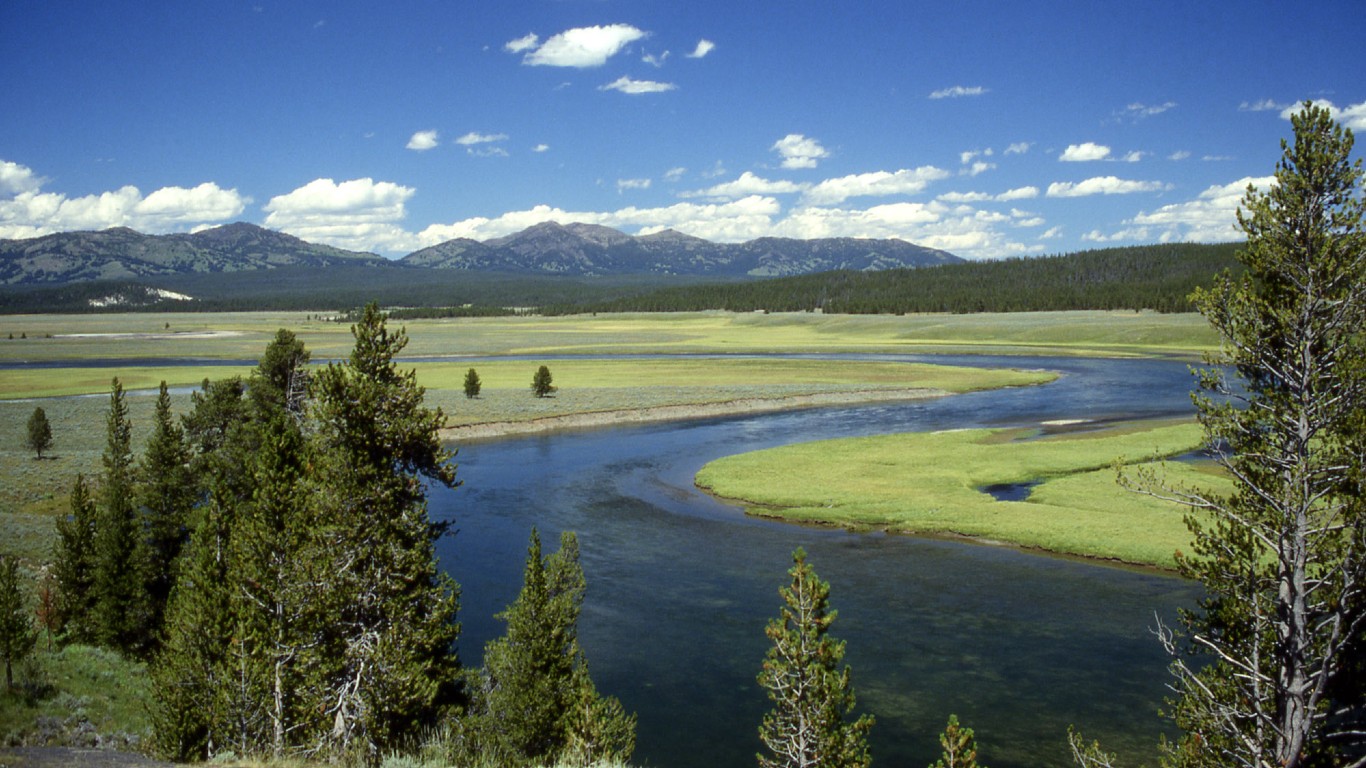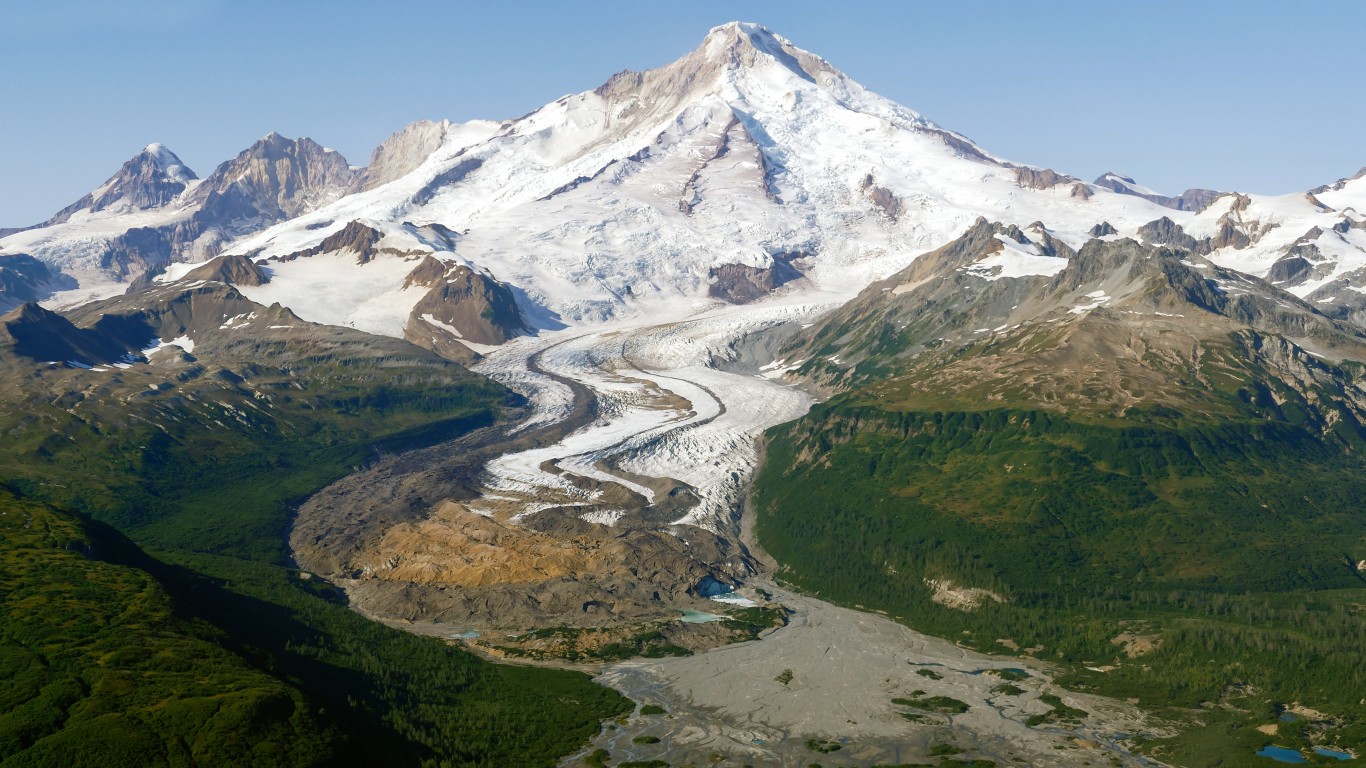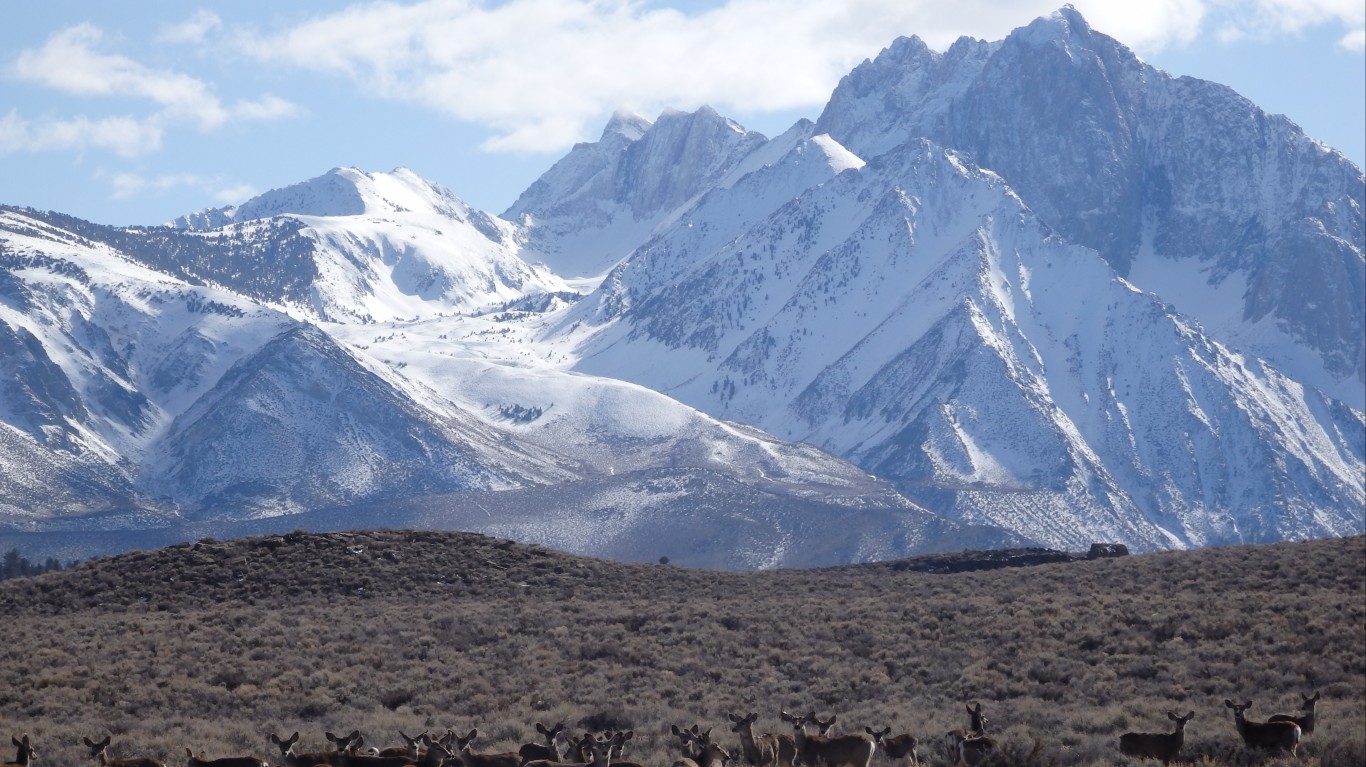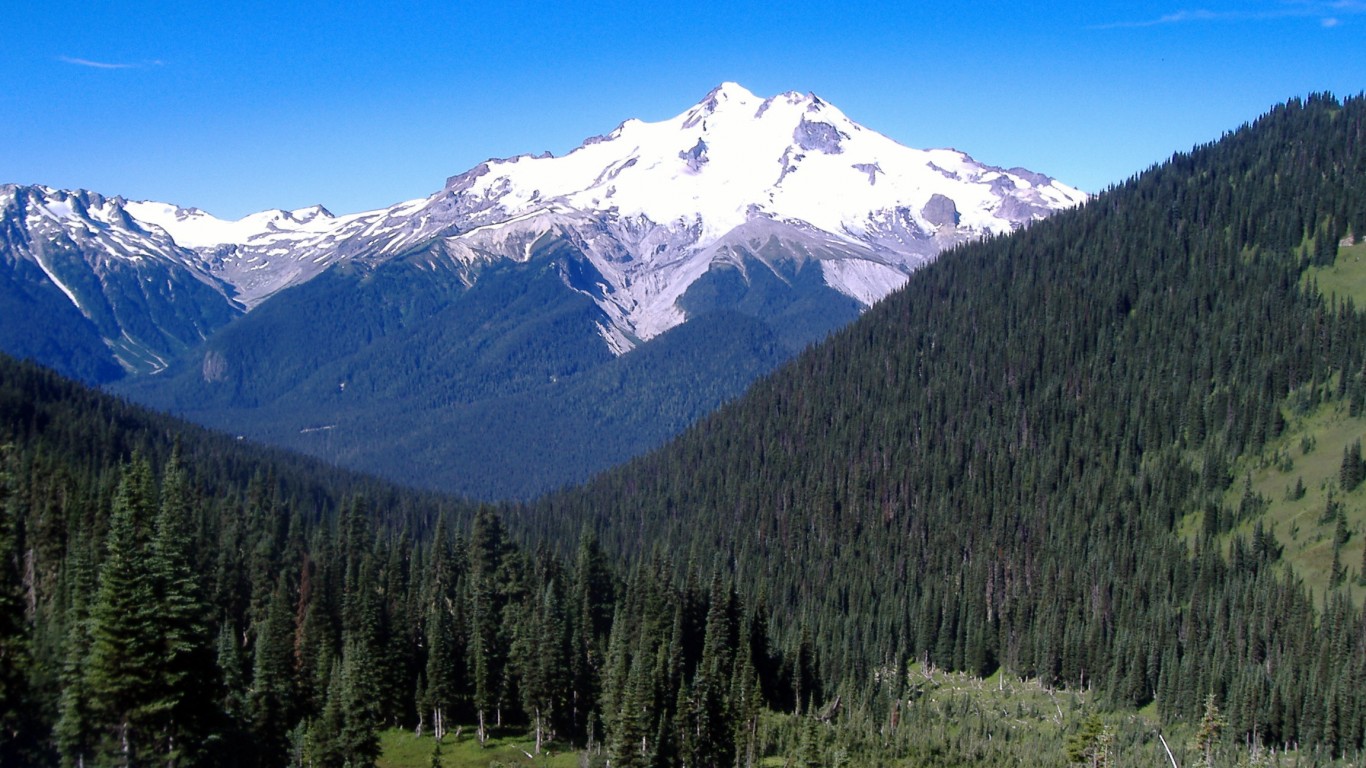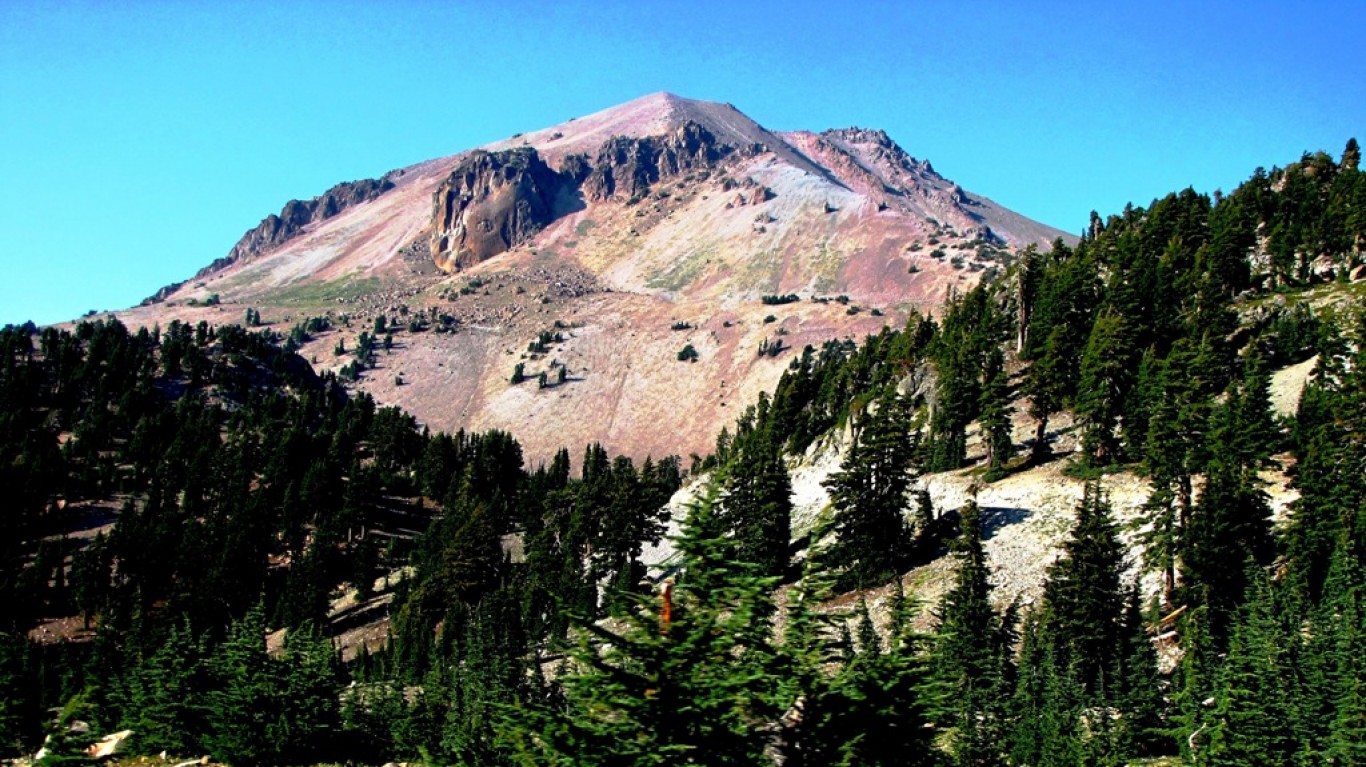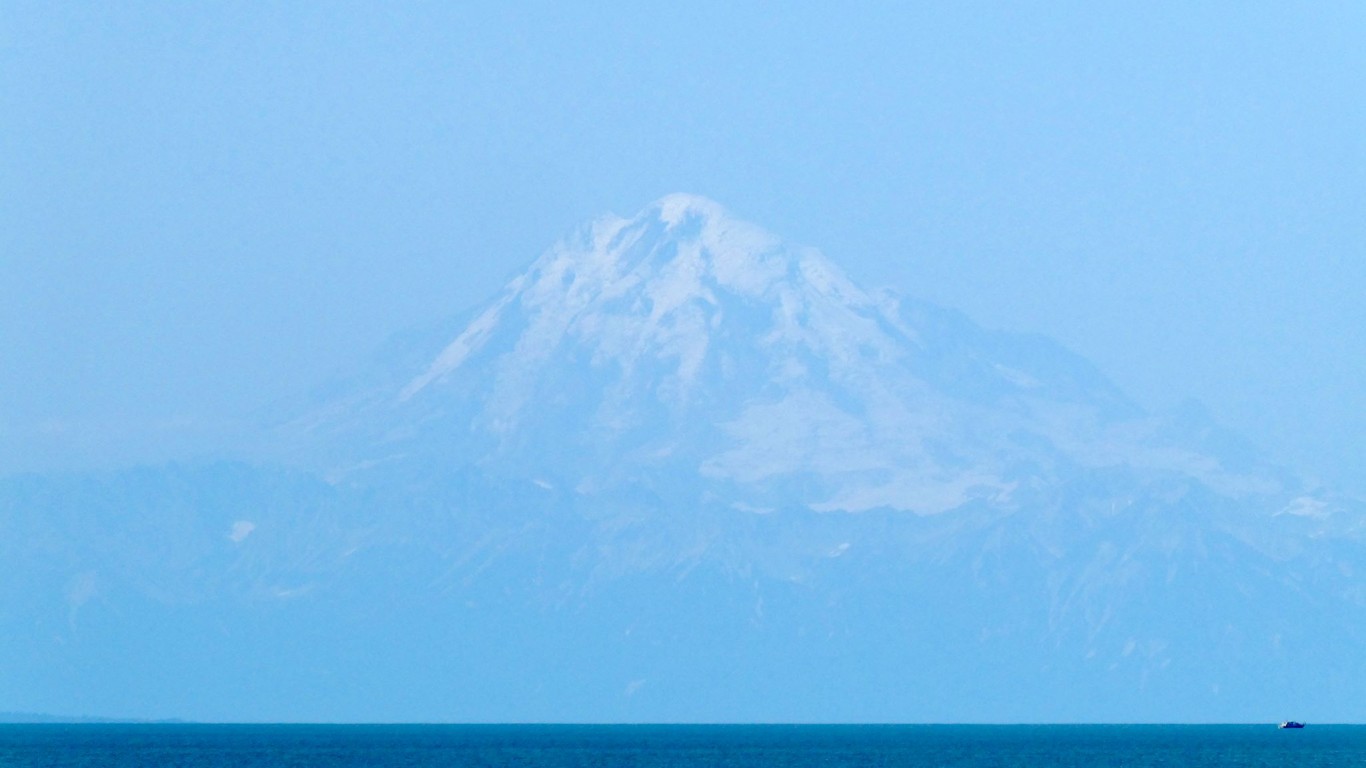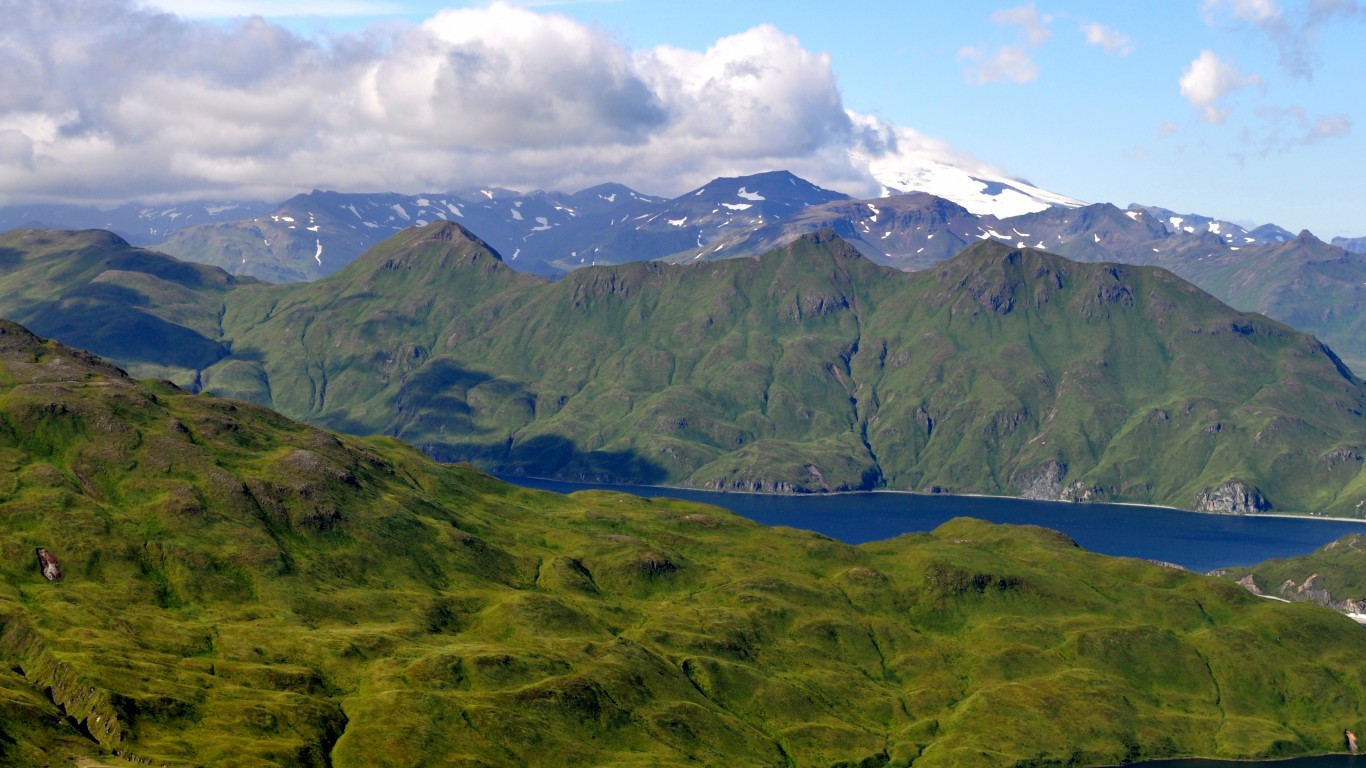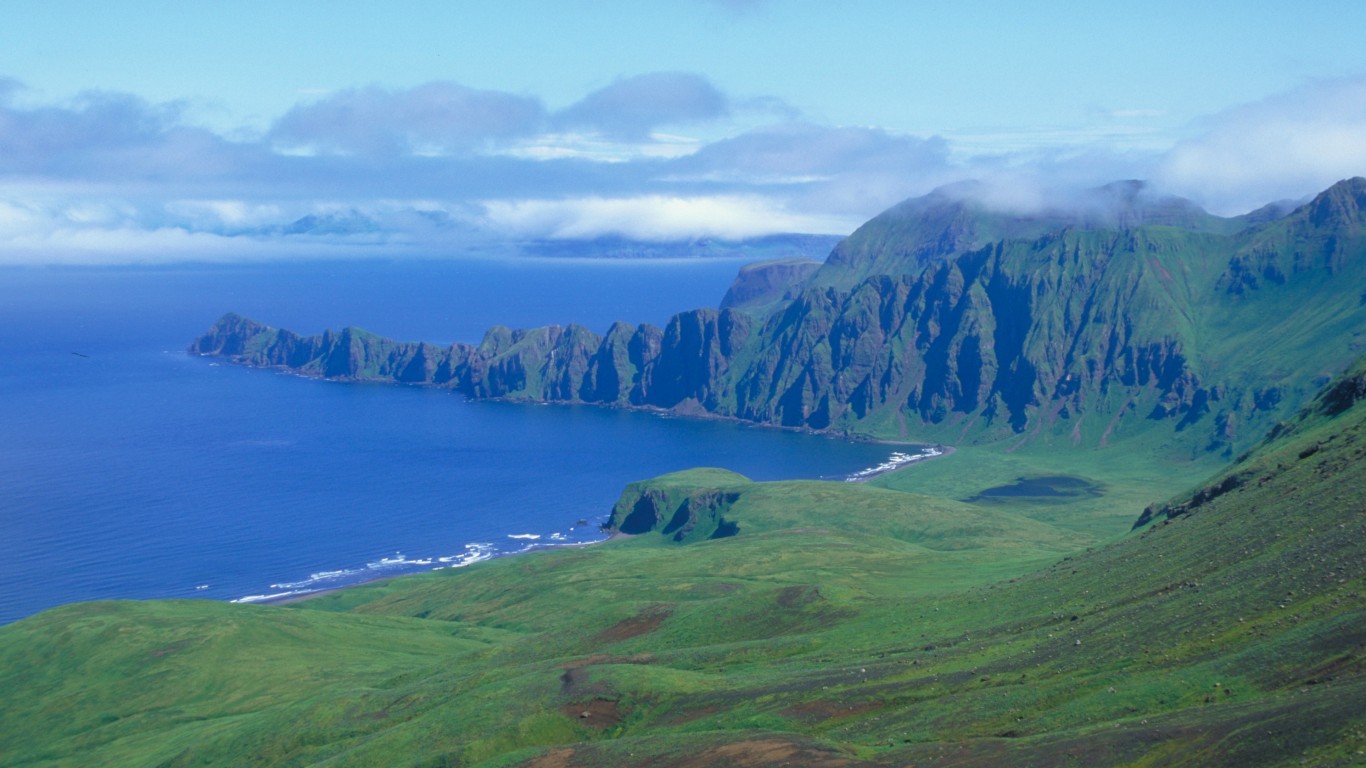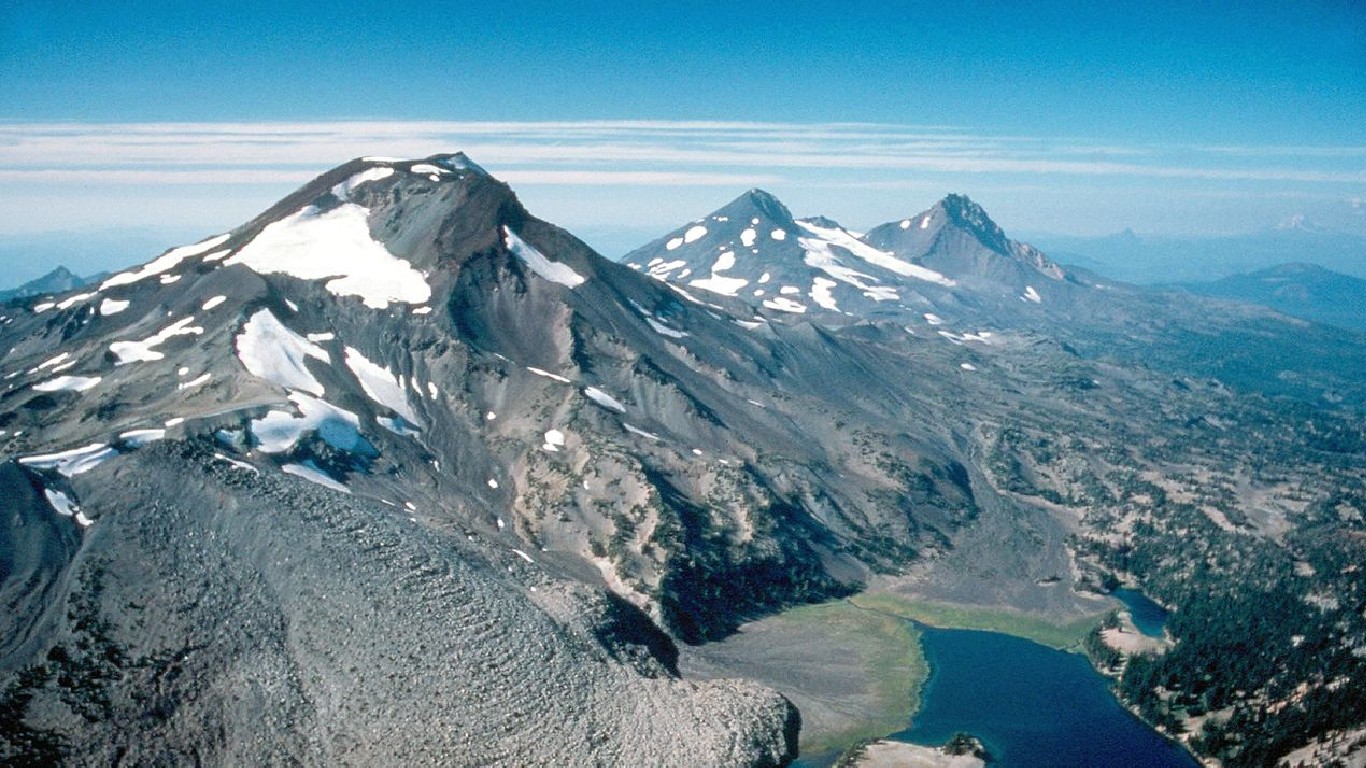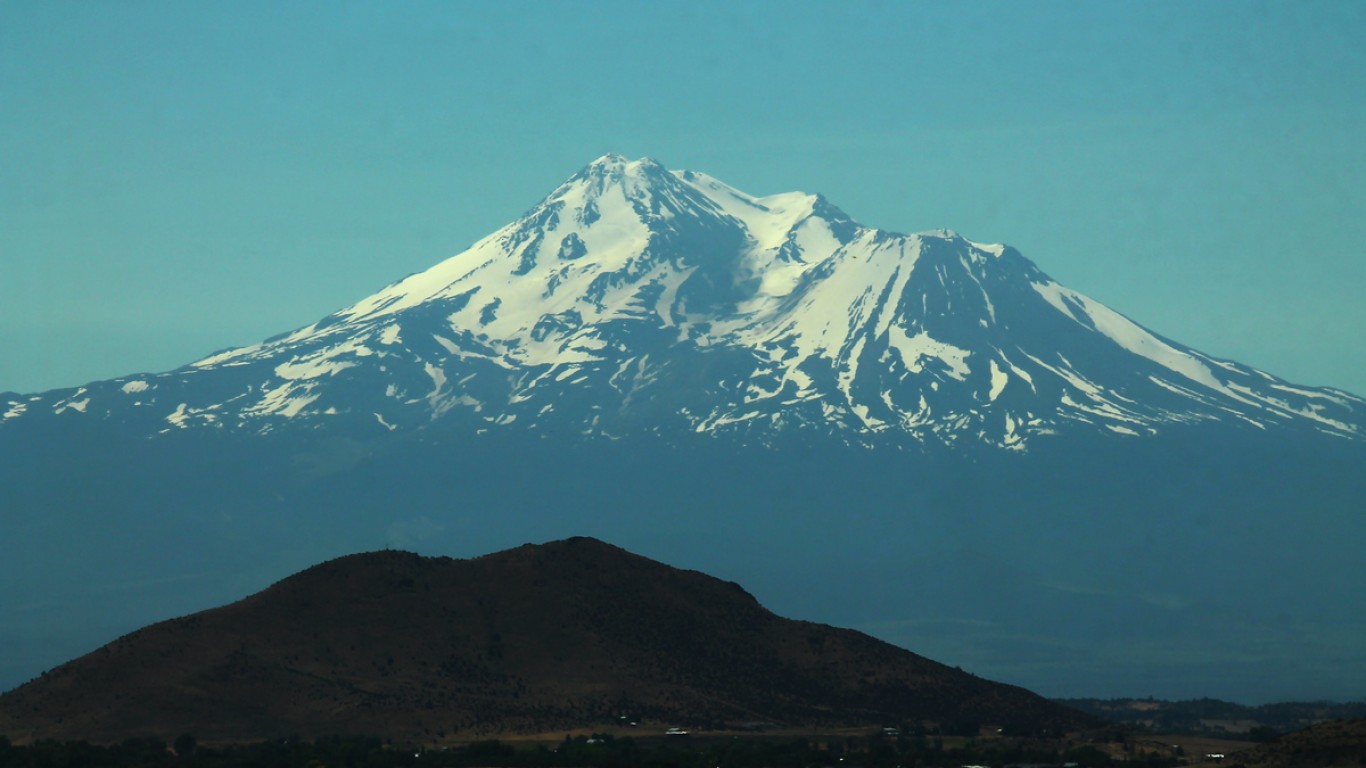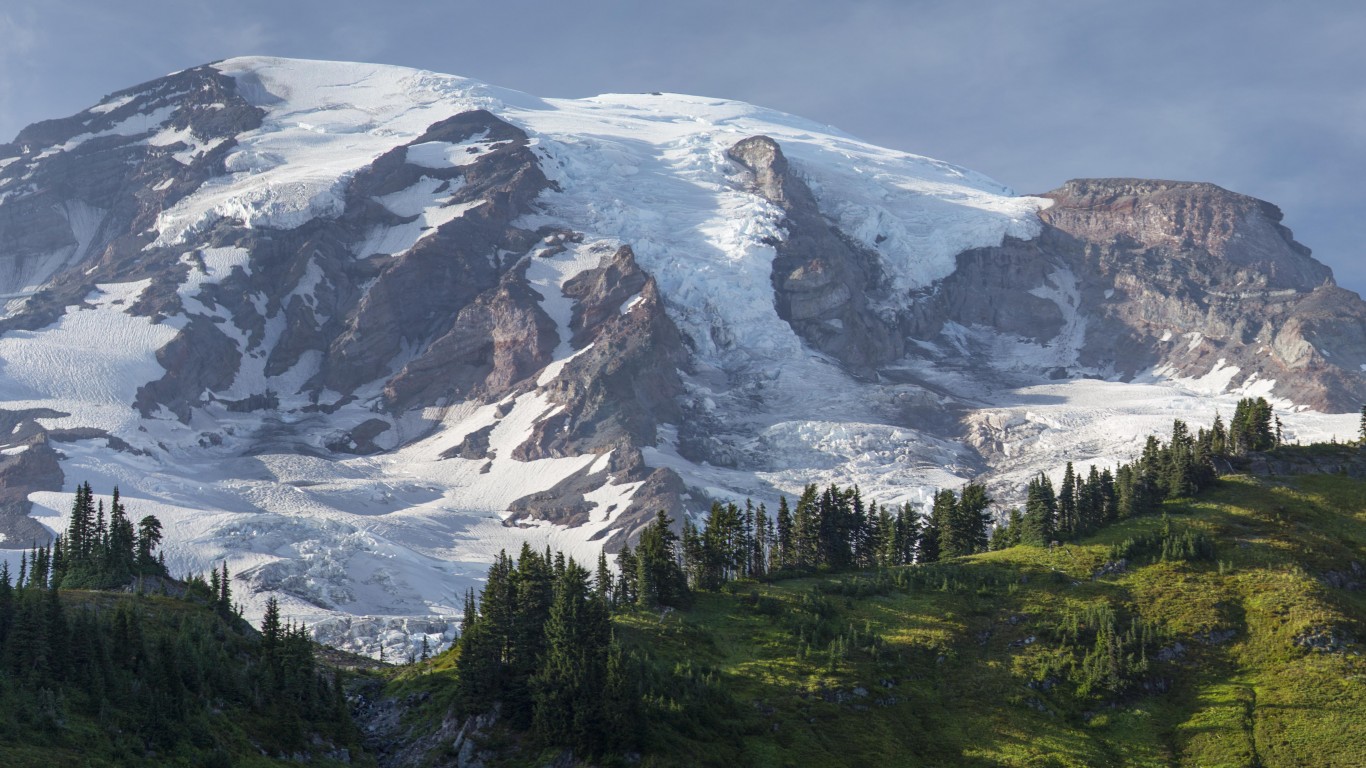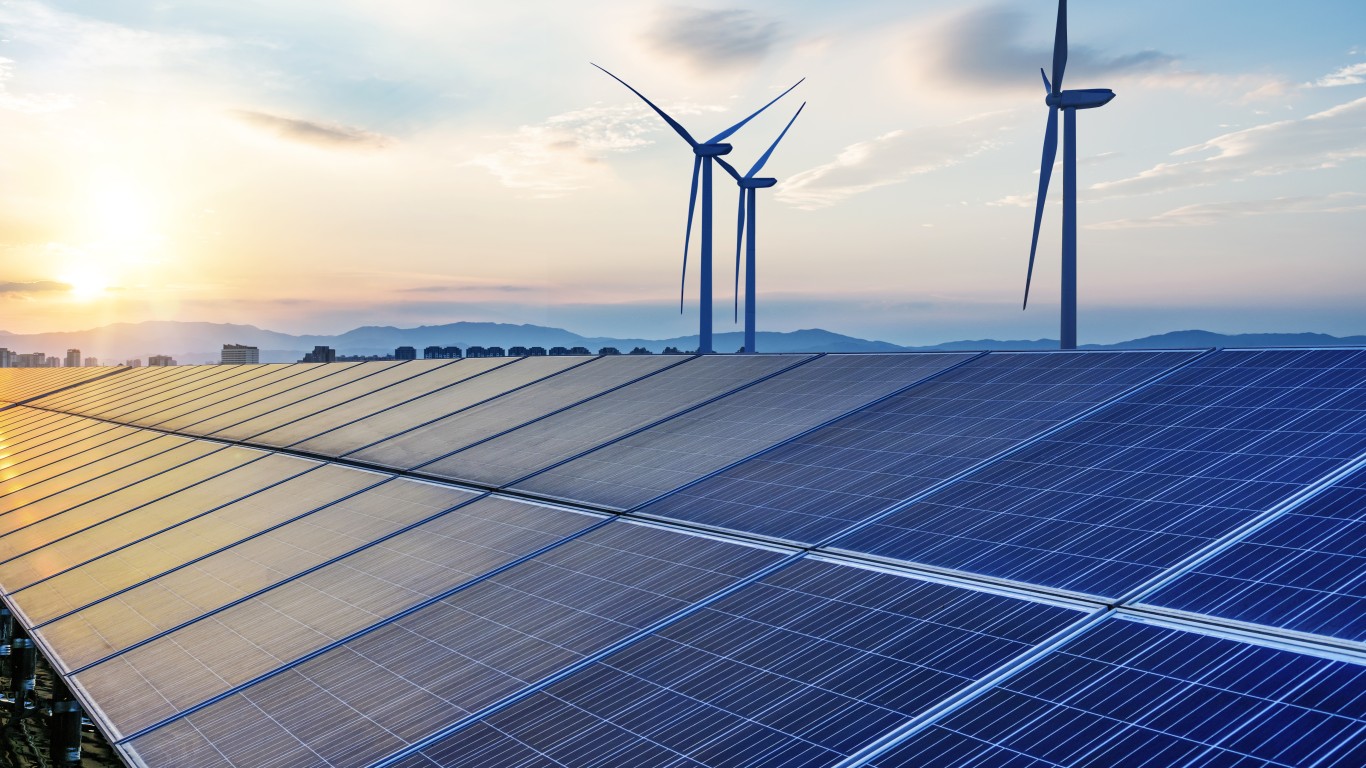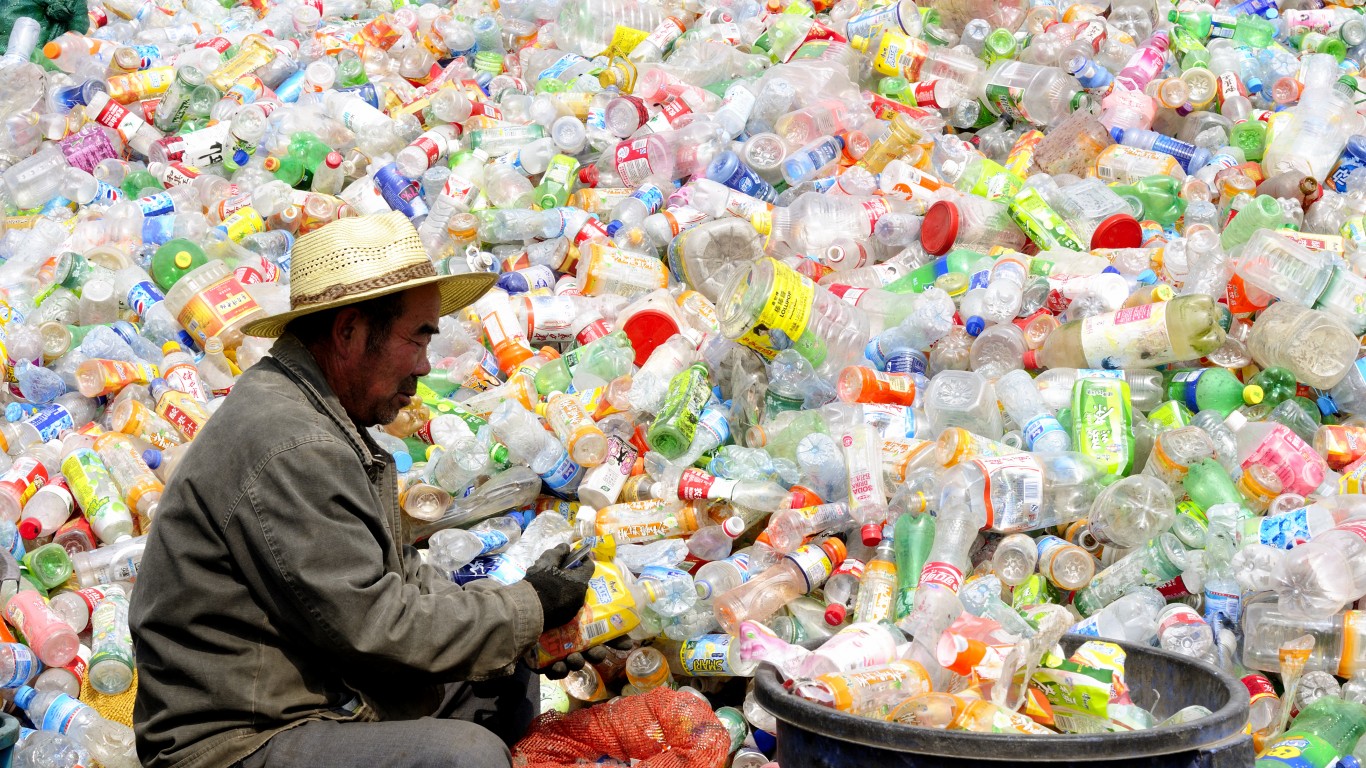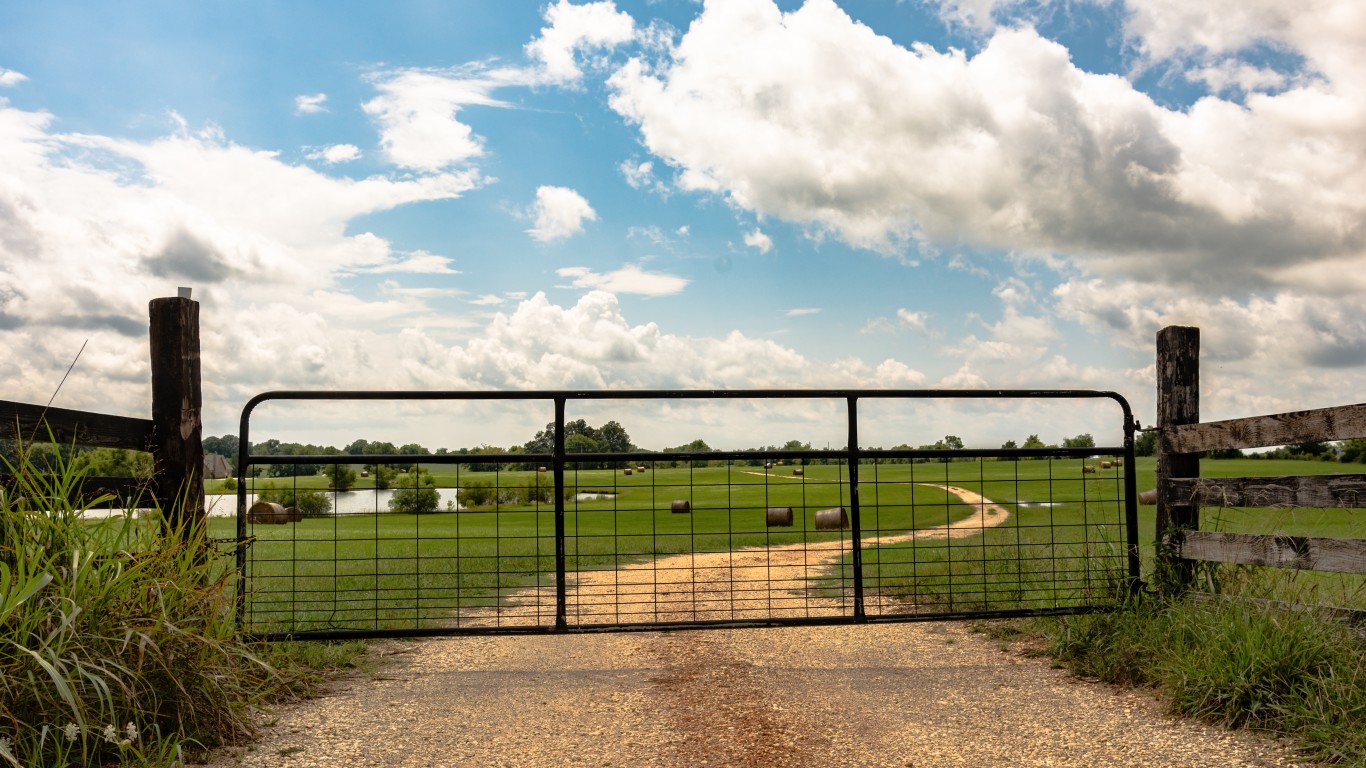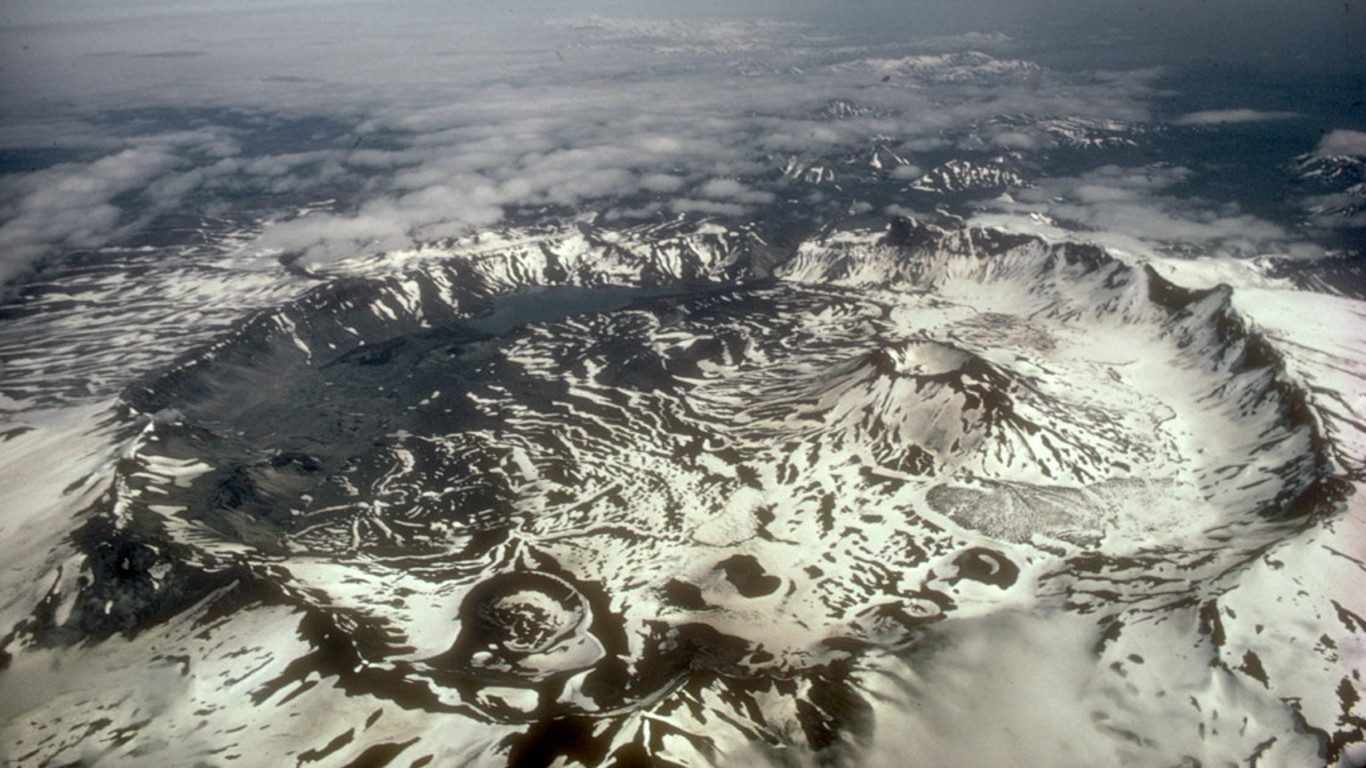
Despite sometimes giving out warning signs, volcanic eruptions are unpredictable. Even relatively less explosive eruptions can cause significant damage and fatalities, like the Nevado del Ruiz eruption in Colombia in 1985. Perhaps the most well-known deadly eruption is Mount Vesuvius in 79 A.D. Archaeologists continue to examine the city of Pompeii and uncover bodies. It is estimated the catastrophe killed as many as 15,000 people. The volcano remains active.
Some of the most dangerous volcanoes in the world are not thousands of miles away from the United States, and some are located within America’s borders. Currently, the most dangerous volcano in America is Kīlauea in Hawaii. (And this is the most dangerous volcano on the planet.)
Many volcanoes are located in what is known as the Ring of Fire. National Geographic defines it as “a path along the Pacific Ocean characterized by active volcanoes and frequent earthquakes. The majority of Earth’s volcanoes and earthquakes take place along the Ring of Fire.” Officially, volcanoes are ruptures in the earth’s crust – normally found where tectonic plates converge and diverge – that spew out lava, volcanic ash, and gasses. Many exist in the ocean.
Scientists have different ways of classifying volcanoes. A stratovolcano (or composite volcano) is a steep symmetrical cone built of lava flows, volcanic ash and other materials. Some of the world’s highest mountains are stratovolcanoes. A lava dome is a comparatively small volcano built from dense lava flow.
A caldera, considered particularly damaging to the surrounding environment, is a depression in the earth caused when the edges of the volcano collapse inward. A shield volcano is large and flat and composed almost entirely of lava flow. It is said to resemble a battle shield in shape. A pyroclastic shield is similar in form but formed mostly from rocks rather than fluid lava.
Not all volcanic eruptions are the same. Some are fairly calm and pose little threat to nearby inhabitants. Others can be violent, with catastrophic effects. Smaller volcanic events can be spectacular to witness from a safe distance, and many active volcanoes release dazzling lava without massive violent eruptions. However, others continue to pose major threats to cities around the world, even if they have previously erupted.
To identify the most dangerous volcano in the United States, 24/7 Wall St. reviewed the overall threat score from the 2018 update to the U.S. Geological Survey national volcanic threat assessment. The most recent eruption year also came from the USGS. The population within 30 and 100 kilometers (about 18 and 30 miles, respectively) of each volcano was obtained from The Smithsonian Institution’s Volcanoes of the World database.
The USGS assigns each volcano an overall numerical threat score based on some 24 metrics assessing “a volcano’s hazard potential and exposure of people and property to those hazards (independent of any mitigation efforts or actions).” (These are the most devastating volcanic eruptions in history.)
The most dangerous volcano in America is Kīlauea in Hawaii. It has an overall threat score of 263. Eruptive episodes as recently as 2018 caused evacuations and at least 87 houses were destroyed by lava. The 2021 summit eruption is ongoing. As of May 11, the USGS reported that the summit eruption within Halemaʻumaʻu crater has continued. In addition, eruption of lava from the Halemaʻumaʻu western vent into the active lava lake has continued, the USGS noted.
Click here to see the most dangerous volcanoes in America
31. Korovin Volcano, Aleutian Islands, Alaska
> Overall threat score: 102
> Population within 30 km (approx. 18 miles): 205
> Population within 100 km (approx. 30 miles): 205
> Most recent eruption year: 2007
[in-text-ad]
30. Atka volcanic complex, Aleutian Islands, Alaska
> Overall threat score: 102
> Population within 30 km (approx. 18 miles): 207
> Population within 100 km (approx. 30 miles): 207
> Most recent eruption year: 1812
29. Mount Veniaminof, Alaskan Peninsula
> Overall threat score: 102
> Population within 30 km (approx. 18 miles): Not available
> Population within 100 km (approx. 30 miles): 542
> Most recent eruption year: 2021
28. Trident Volcano, Alaskan Peninsula
> Overall threat score: 106
> Population within 30 km (approx. 18 miles): Not available
> Population within 100 km (approx. 30 miles): 117
> Most recent eruption year: 1974
[in-text-ad-2]
27. Mount Martin, Alaskan Peninsula
> Overall threat score: 106
> Population within 30 km (approx. 18 miles): Not available
> Population within 100 km (approx. 30 miles): 914
> Most recent eruption year: 1953
26. Mount Mageik, Alaskan Peninsula
> Overall threat score: 106
> Population within 30 km (approx. 18 miles): Not available
> Population within 100 km (approx. 30 miles): 376
> Most recent eruption year: -500
[in-text-ad]
25. Mount Katmai, Alaskan Peninsula
> Overall threat score: 106
> Population within 30 km (approx. 18 miles): Not available
> Population within 100 km (approx. 30 miles): 128
> Most recent eruption year: 1912
24. Mono-Inyo Craters, California
> Overall threat score: 106
> Population within 30 km (approx. 18 miles): 9,048
> Population within 100 km (approx. 30 miles): 82,160
> Most recent eruption year: 1380
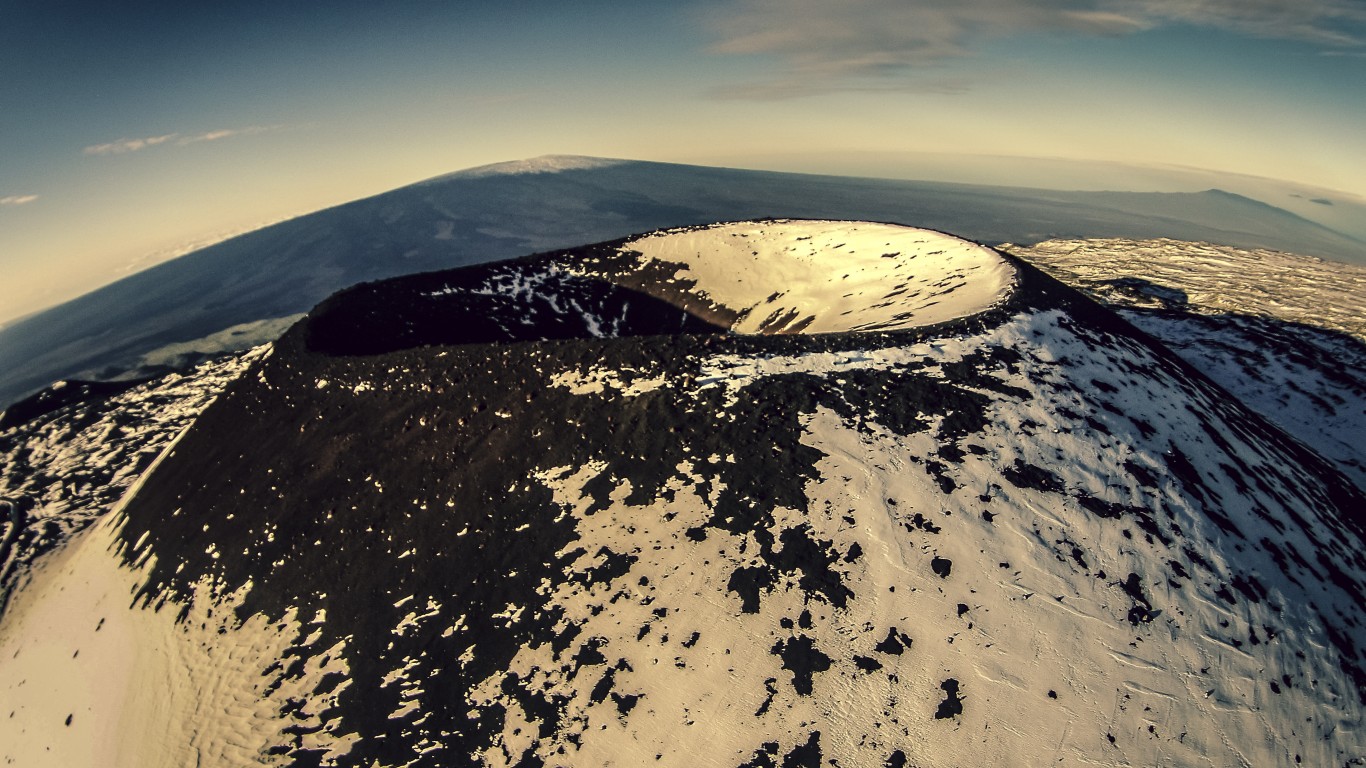
23. Hualālai, Hawaii
> Overall threat score: 109
> Population within 30 km (approx. 18 miles): 46,959
> Population within 100 km (approx. 30 miles): 166,240
> Most recent eruption year: 1801
[in-text-ad-2]
22. Aniakchak Crater, Alaskan Peninsula
> Overall threat score: 112
> Population within 30 km (approx. 18 miles): 36
> Population within 100 km (approx. 30 miles): 479
> Most recent eruption year: 1931
21. Yellowstone caldera, Wyoming
> Overall threat score: 115
> Population within 30 km (approx. 18 miles): 234
> Population within 100 km (approx. 30 miles): 20,692
> Most recent eruption year: -1350
[in-text-ad]
20. Iliamna Volcano, Cook Inlet, Alaska
> Overall threat score: 115
> Population within 30 km (approx. 18 miles): 01
> Population within 100 km (approx. 30 miles): 7,564
> Most recent eruption year: 1876
19. Mount Okmok, Aleutian Islands, Alaska
> Overall threat score: 117
> Population within 30 km (approx. 18 miles): Not available
> Population within 100 km (approx. 30 miles): 04
> Most recent eruption year: 2008
18. Long Valley Caldera, California
> Overall threat score: 129
> Population within 30 km (approx. 18 miles):
> Population within 100 km (approx. 30 miles):
> Most recent eruption year:
[in-text-ad-2]

17. Crater Lake, Oregon
> Overall threat score: 129
> Population within 30 km (approx. 18 miles): 366
> Population within 100 km (approx. 30 miles): 272,674
> Most recent eruption year: -2850
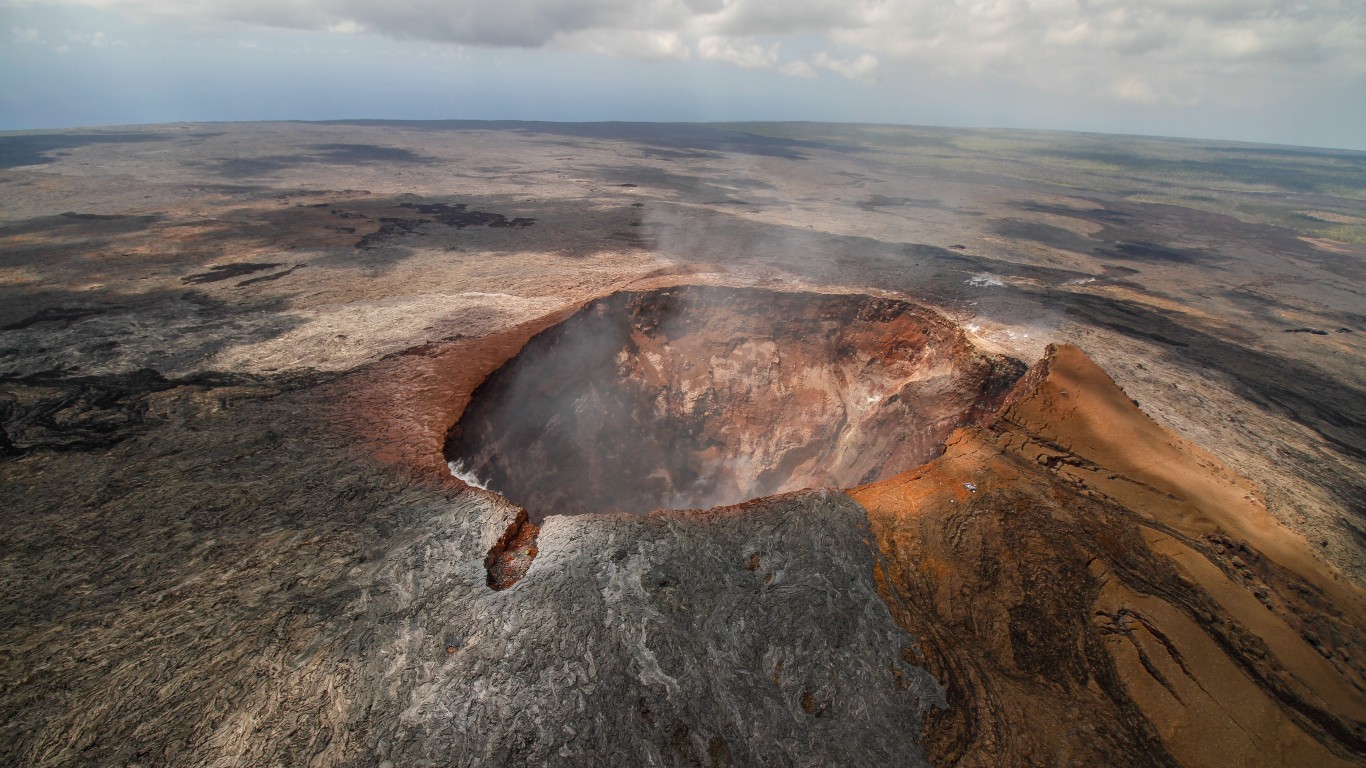
16. Mauna Loa, Hawaii
> Overall threat score: 131
> Population within 30 km (approx. 18 miles): 1,906
> Population within 100 km (approx. 30 miles): 175,315
> Most recent eruption year: 1984
[in-text-ad]
15. Glacier Peak, Washington
> Overall threat score: 135
> Population within 30 km (approx. 18 miles): 23
> Population within 100 km (approx. 30 miles): 1,340,896
> Most recent eruption year: 1700

14. Mount Baker, Washington
> Overall threat score: 139
> Population within 30 km (approx. 18 miles): 8,568
> Population within 100 km (approx. 30 miles): 1,990,504
> Most recent eruption year: 1880
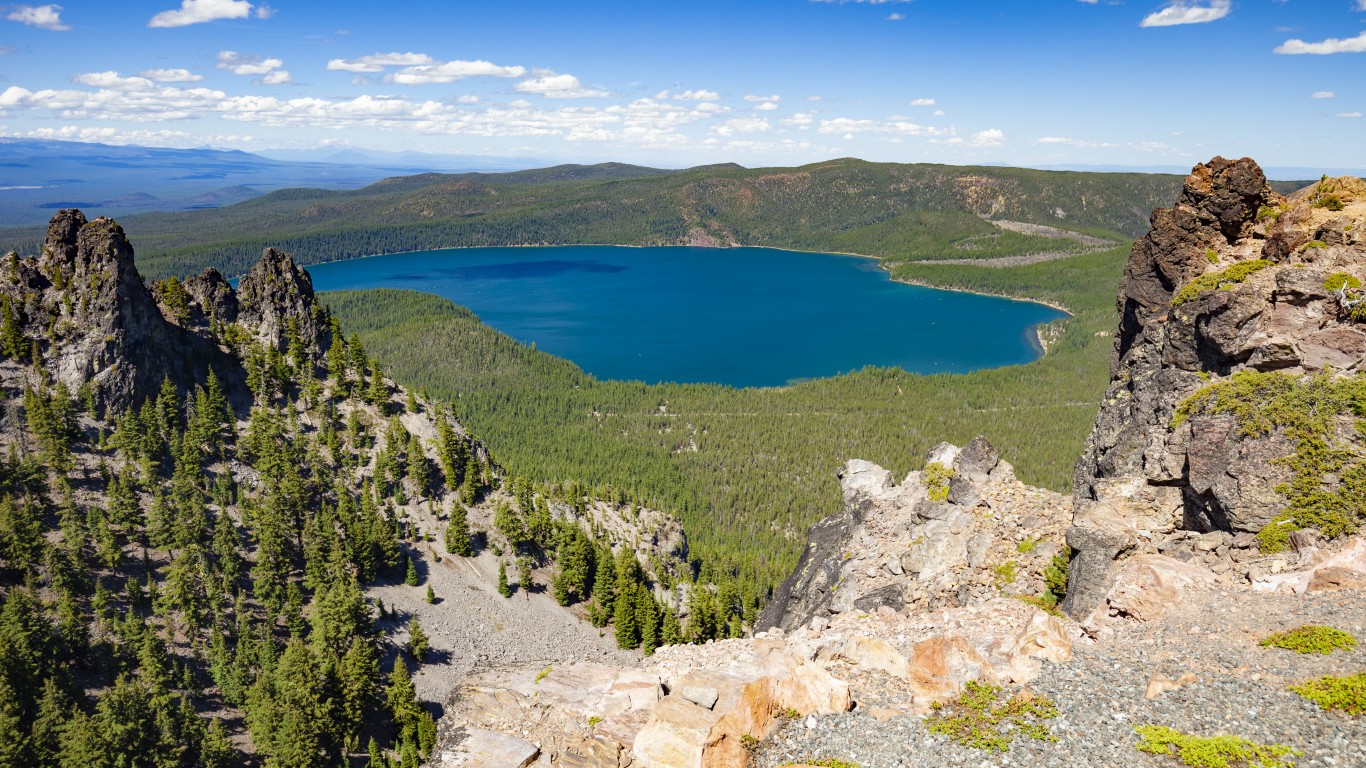
13. Newberry Volcano, Oregon
> Overall threat score: 146
> Population within 30 km (approx. 18 miles): 16,437
> Population within 100 km (approx. 30 miles): 180,091
> Most recent eruption year: 690
[in-text-ad-2]
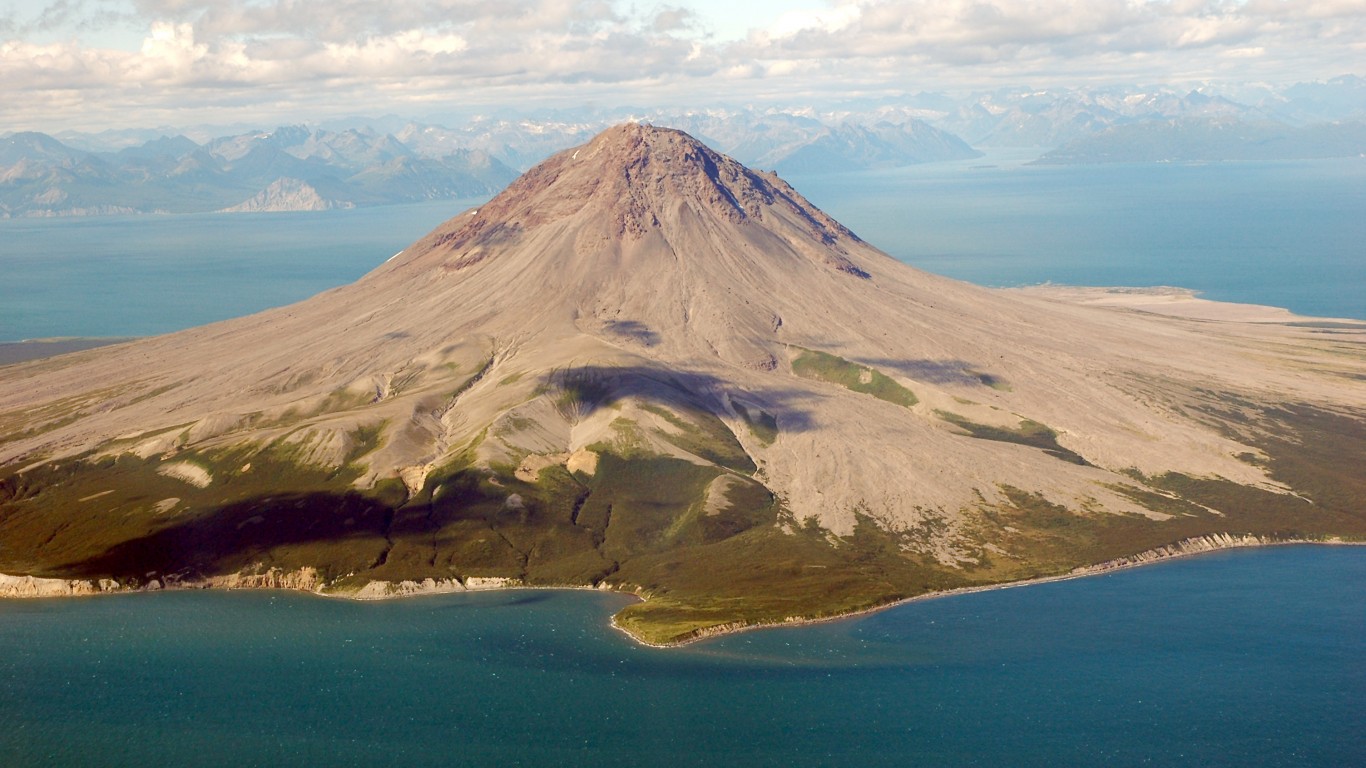
12. Augustine Volcano, Cook Inlet, Alaska
> Overall threat score: 151
> Population within 30 km (approx. 18 miles): Not available
> Population within 100 km (approx. 30 miles): 759
> Most recent eruption year: 2006
11. Lassen volcanic center, California
> Overall threat score: 153
> Population within 30 km (approx. 18 miles): 2,340
> Population within 100 km (approx. 30 miles): 439,135
> Most recent eruption year: 1917
[in-text-ad]
10. Mount Spurr, Cook Inlet, Alaska
> Overall threat score: 161
> Population within 30 km (approx. 18 miles): Not available
> Population within 100 km (approx. 30 miles): 11,097
> Most recent eruption year: 1992
9. Makushin Volcano, Aleutian Islands, Alaska
> Overall threat score: 161
> Population within 30 km (approx. 18 miles): 3,437
> Population within 100 km (approx. 30 miles): 3,850
> Most recent eruption year: 1995
8. Akutan Island, Aleutian Islands, Alaska
> Overall threat score: Aleutian Islands, Alaska
> Population within 30 km (approx. 18 miles): 233
> Population within 100 km (approx. 30 miles): 4,361
> Most recent eruption year: 1992
[in-text-ad-2]
7. Three Sisters, Cascade Volcanic Arc, Oregon
> Overall threat score: 165
> Population within 30 km (approx. 18 miles): 5,672
> Population within 100 km (approx. 30 miles): 279,885
> Most recent eruption year: 440

6. Mount Hood, Oregon
> Overall threat score: 178
> Population within 30 km (approx. 18 miles): 9,721
> Population within 100 km (approx. 30 miles): 2,067,520
> Most recent eruption year: 1866
[in-text-ad]
5. Mount Shasta, California
> Overall threat score: 178
> Population within 30 km (approx. 18 miles): 19,785
> Population within 100 km (approx. 30 miles): 265,016
> Most recent eruption year: 1250
4. Redoubt Volcano, Cook Inlet, Alaska
> Overall threat score: 201
> Population within 30 km (approx. 18 miles): 01
> Population within 100 km (approx. 30 miles): 32,410
> Most recent eruption year: 2009
3. Mount Rainier, Washington
> Overall threat score: 203
> Population within 30 km (approx. 18 miles): 3,187
> Population within 100 km (approx. 30 miles): 2,667,609
> Most recent eruption year: 1450
[in-text-ad-2]

2. Mount St. Helens, Washington
> Overall threat score: 235
> Population within 30 km (approx. 18 miles): 2,221
> Population within 100 km (approx. 30 miles): 2,173,101
> Most recent eruption year: 2008
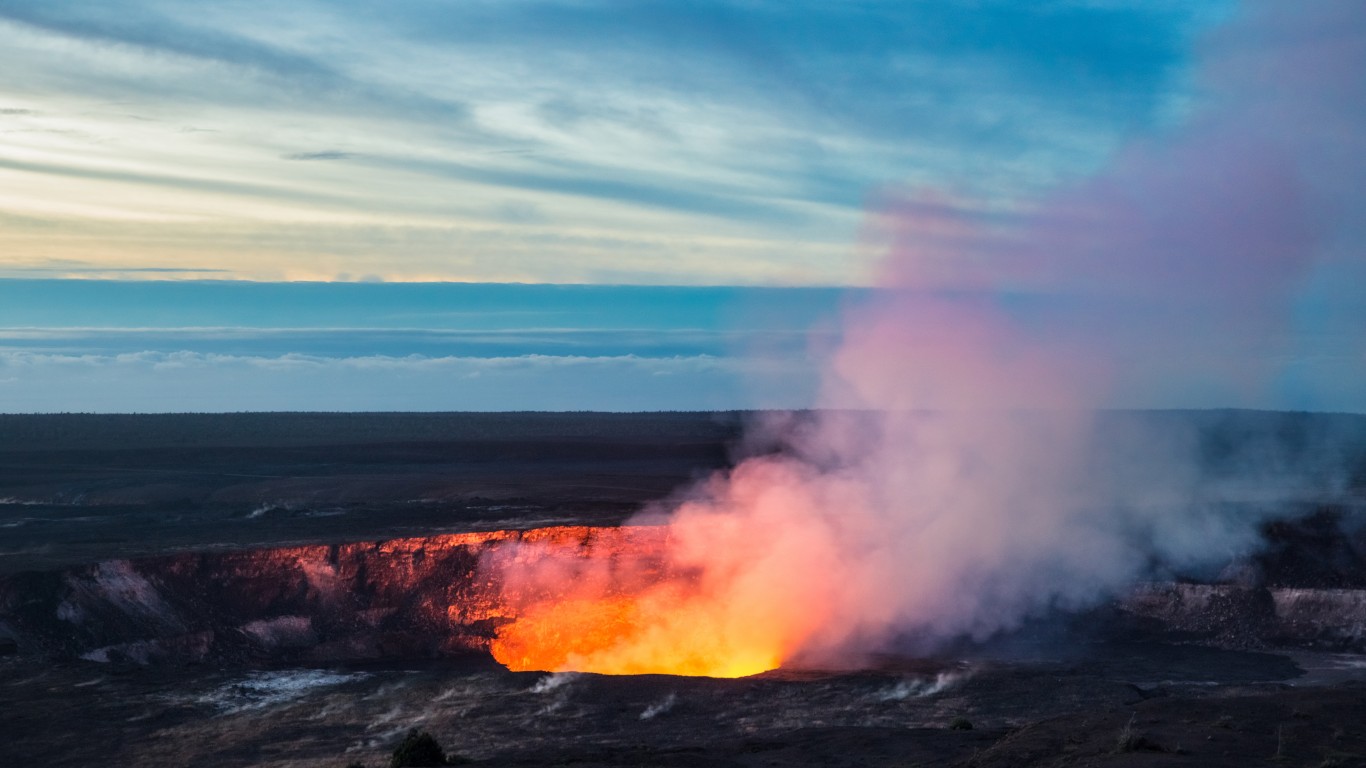
1. Kīlauea, Hawaii
> Overall threat score: 263
> Population within 30 km (approx. 18 miles): 8,495
> Population within 100 km (approx. 30 miles): 169,550
> Most recent eruption year: 2021
It’s Your Money, Your Future—Own It (sponsor)
Are you ahead, or behind on retirement? For families with more than $500,000 saved for retirement, finding a financial advisor who puts your interest first can be the difference, and today it’s easier than ever. SmartAsset’s free tool matches you with up to three fiduciary financial advisors who serve your area in minutes. Each advisor has been carefully vetted and must act in your best interests. Start your search now.
If you’ve saved and built a substantial nest egg for you and your family, don’t delay; get started right here and help your retirement dreams become a retirement reality.
Thank you for reading! Have some feedback for us?
Contact the 24/7 Wall St. editorial team.
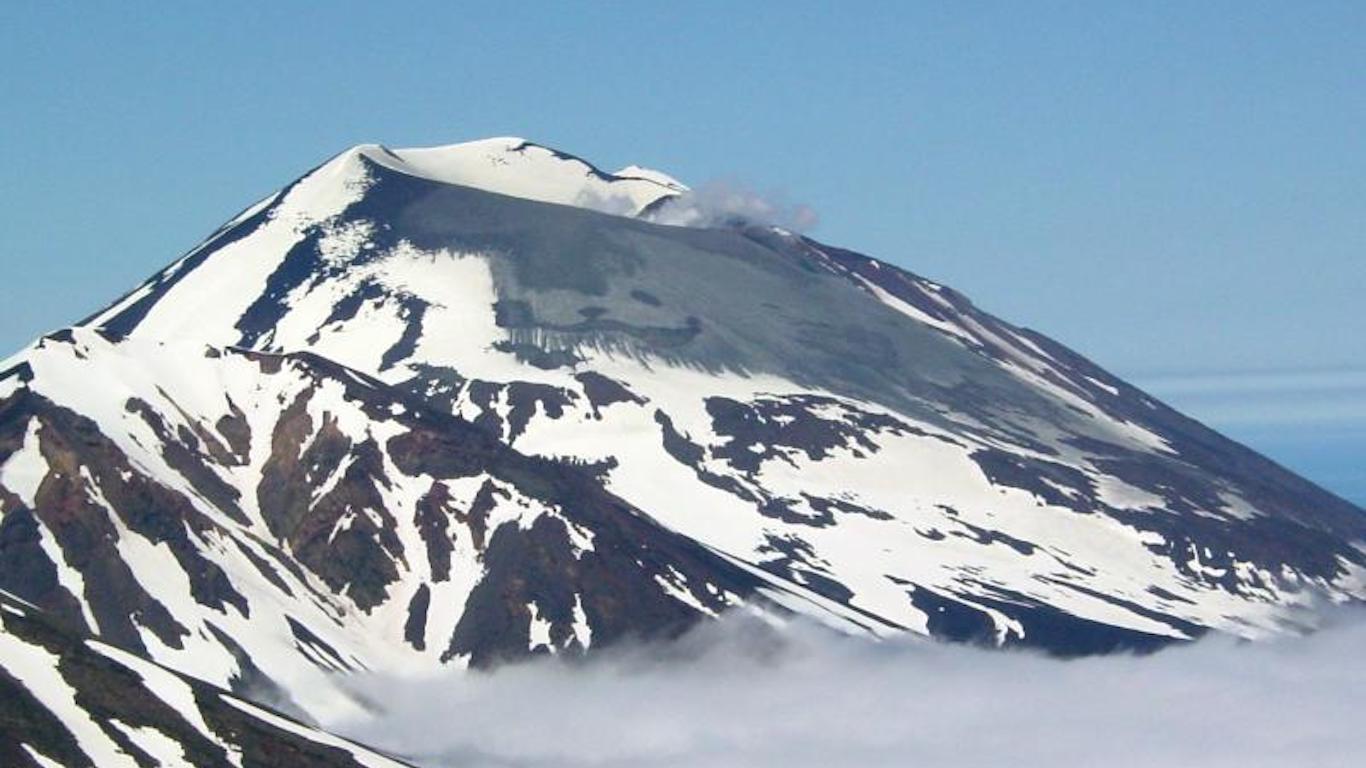
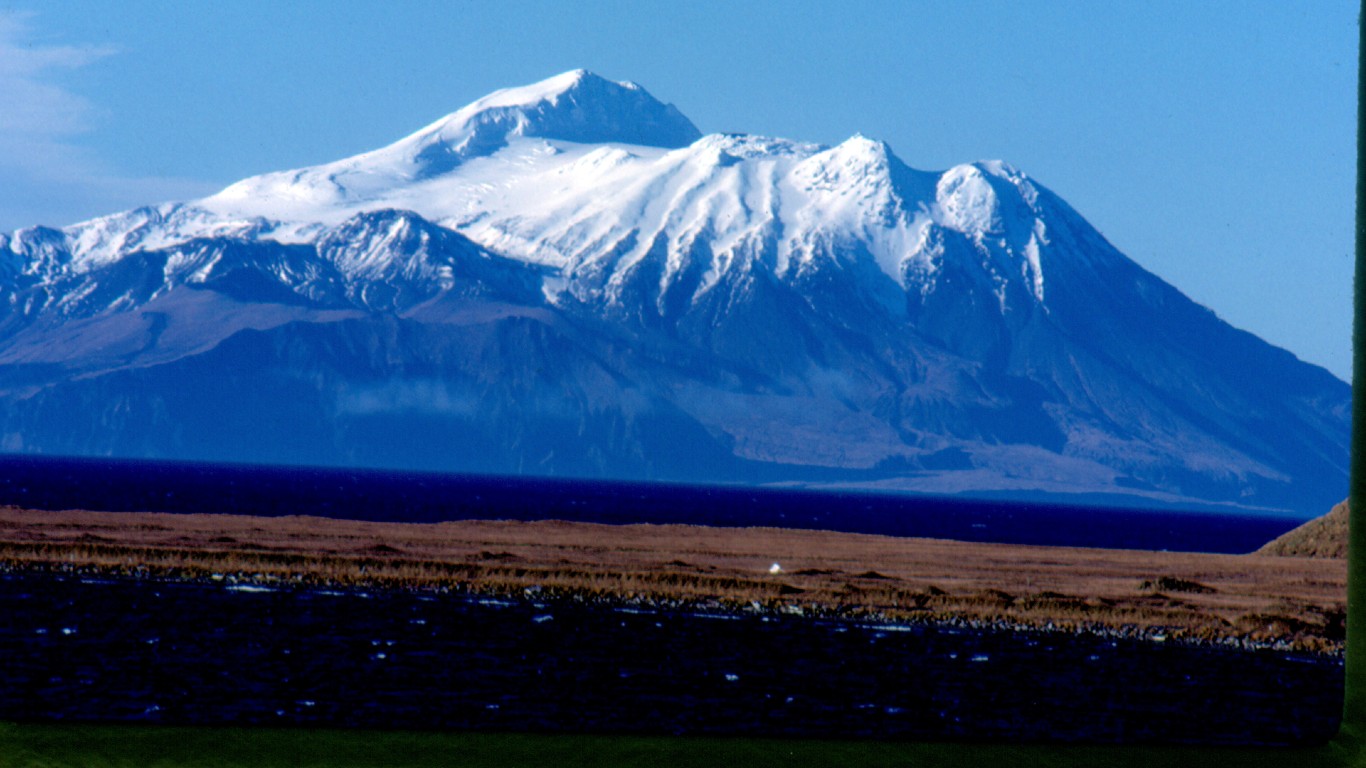
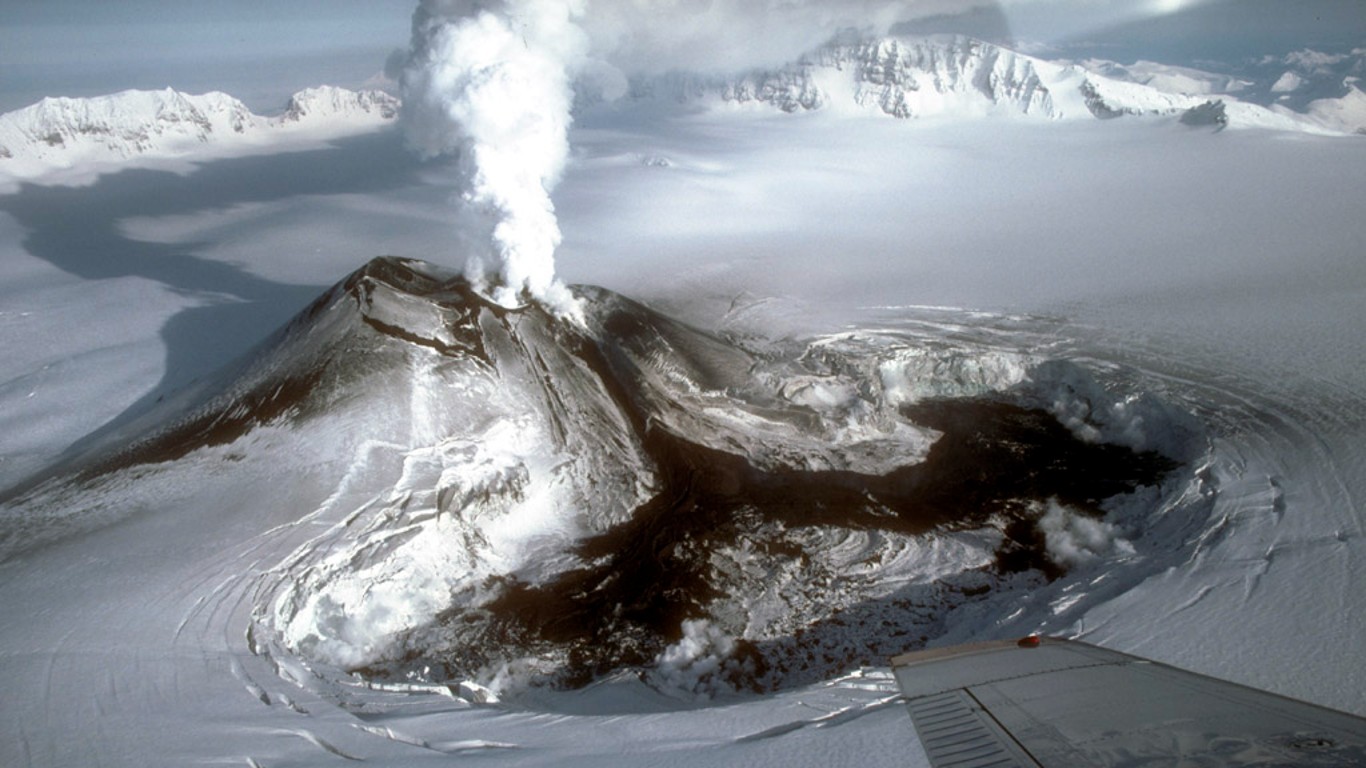

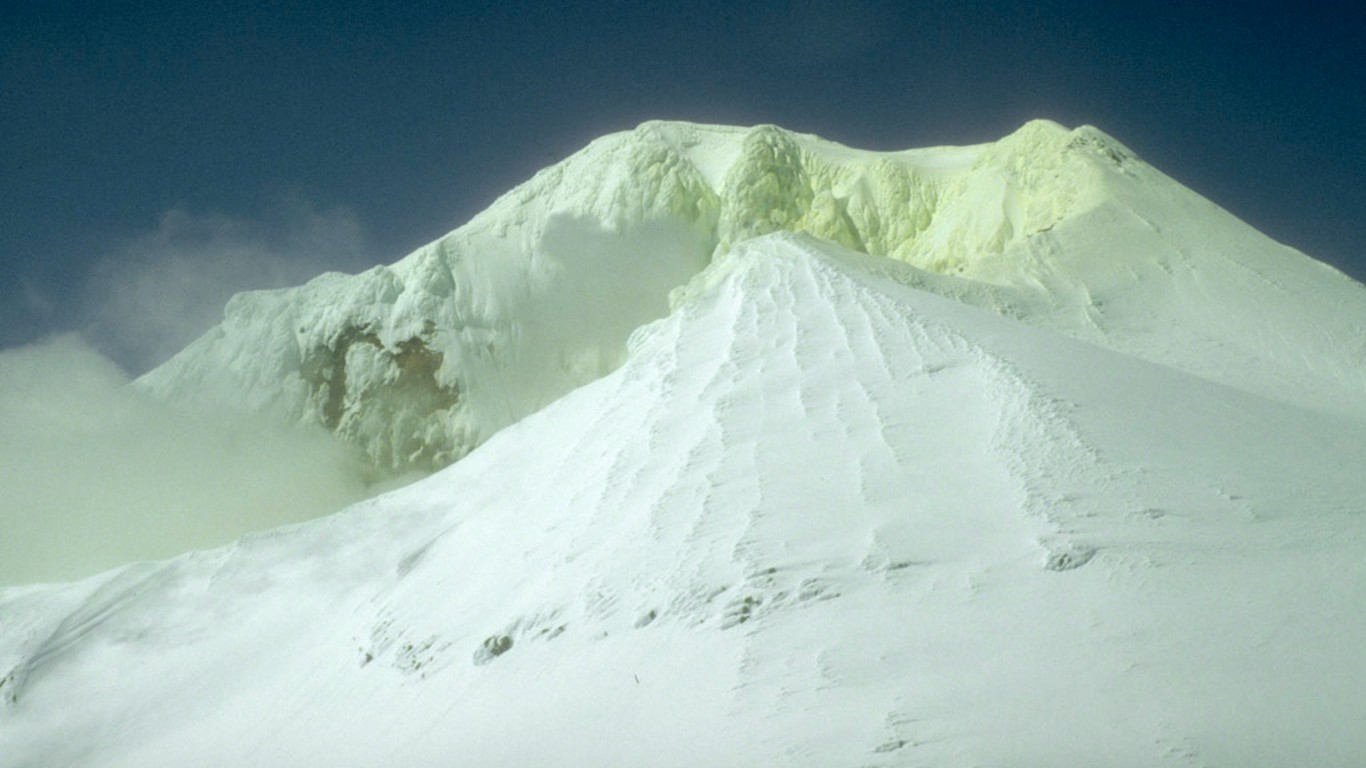

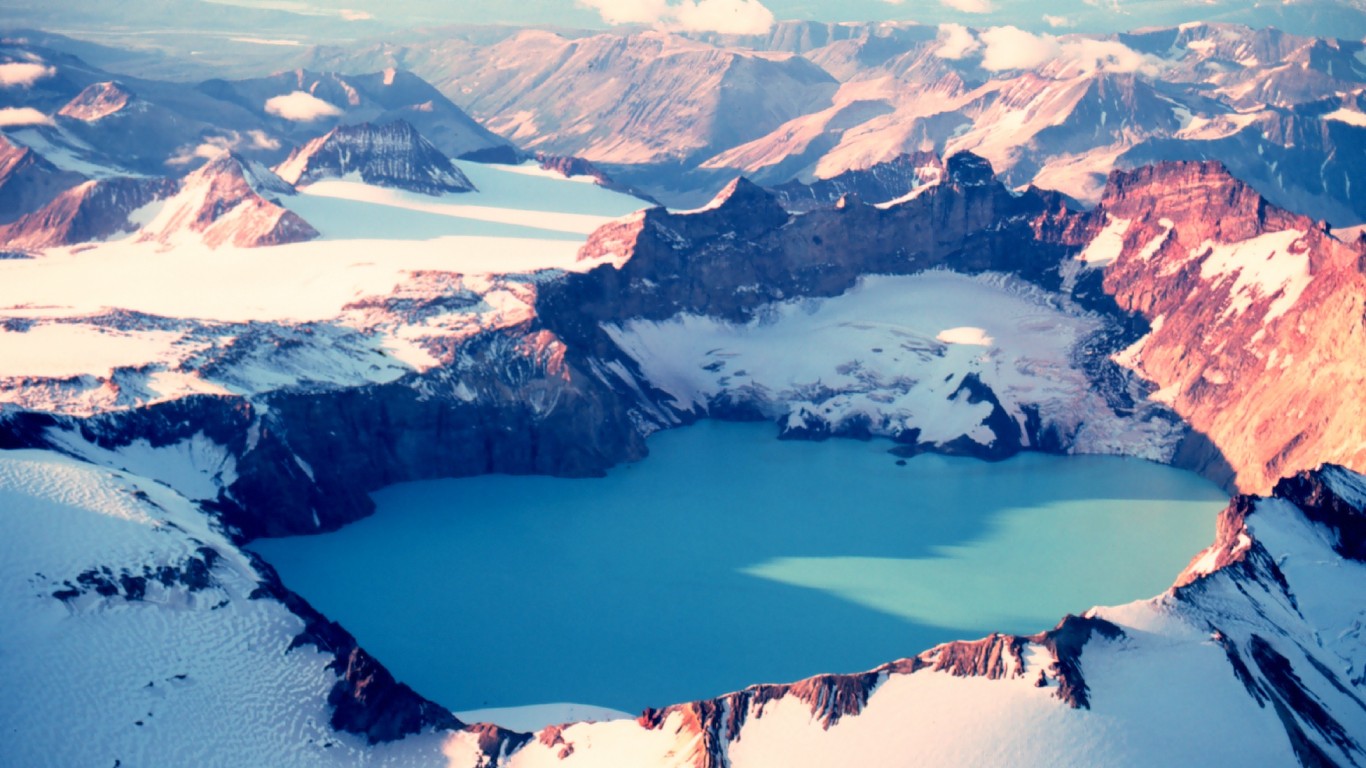
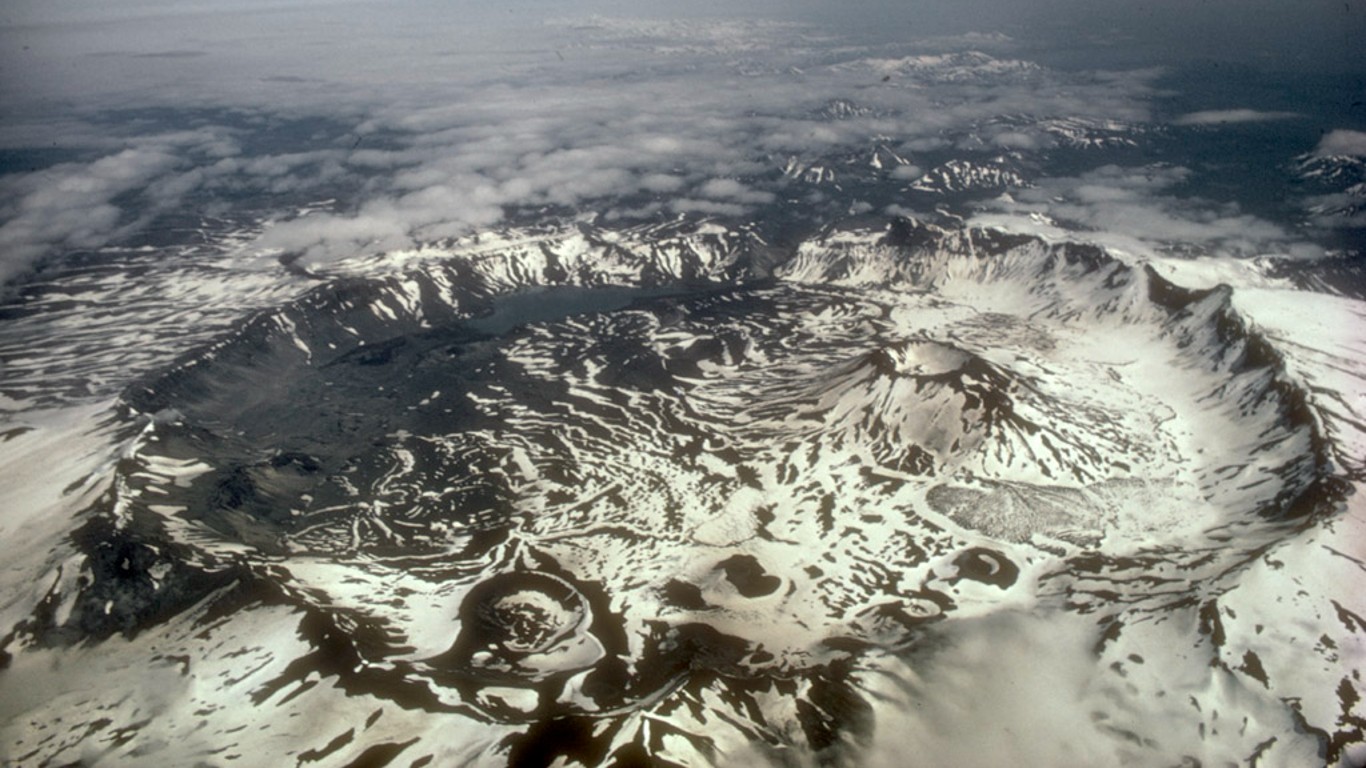 24/7 Wall St.
24/7 Wall St.